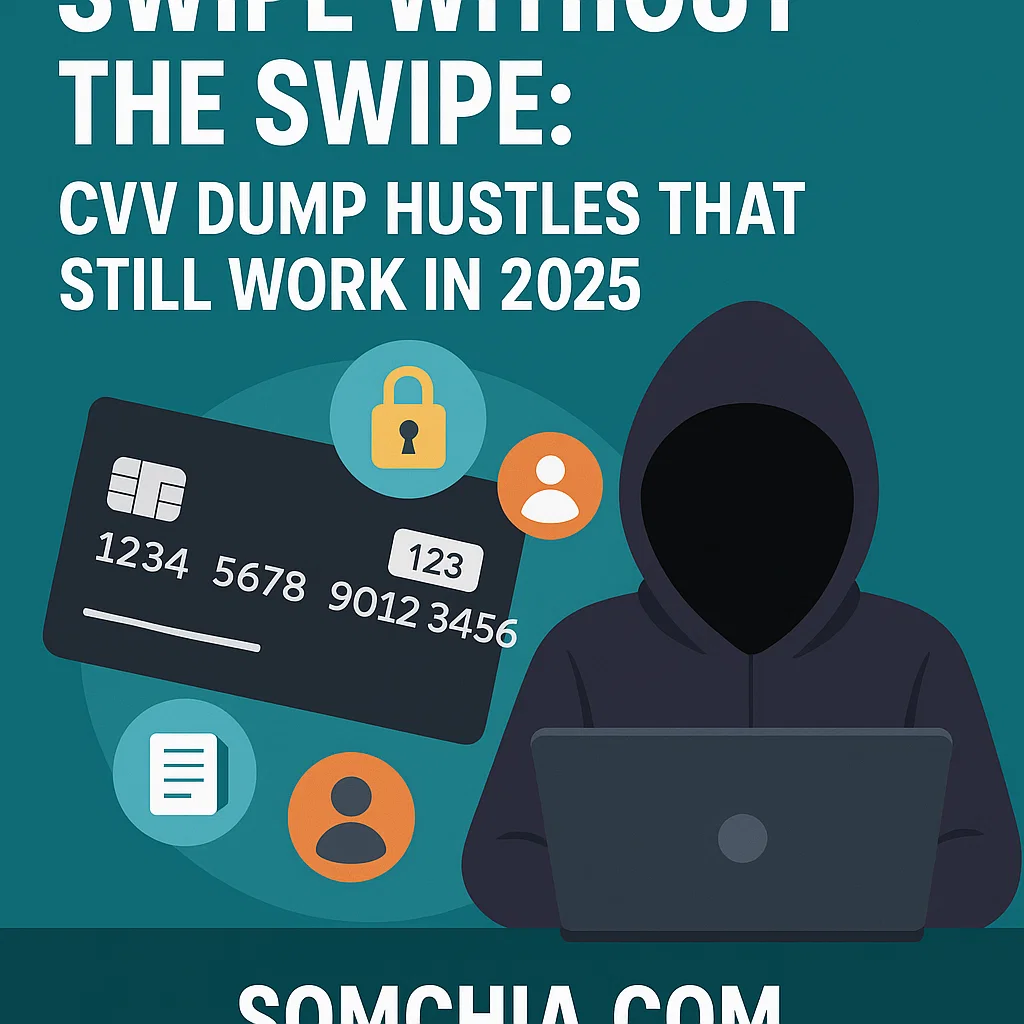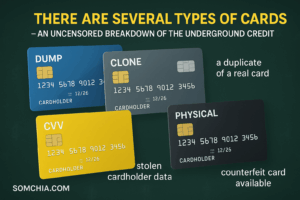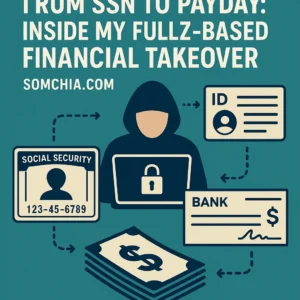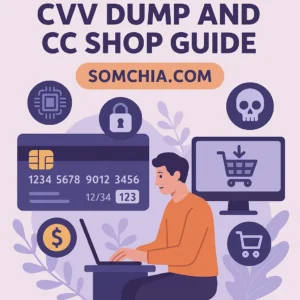How CVV Fraud, Carding Tools, and Digital Exploits Still Make Easy Money in the Age of Advanced Security
It’s 2025, and despite AI-driven fraud detection, biometric logins, and tokenized transactions, CVV dumps are still alive and printing cash. For the uninitiated, this may sound like outdated news, but ask any serious carder — the CVV game hasn’t died, it’s just evolved.
This article dives into the most effective CVV dump hustles still working in 2025, why they bypass even the latest antifraud systems, and how online criminals continue to exploit the card-not-present (CNP) world without ever touching a physical card.
What Is a CVV Dump?
A CVV dump refers to stolen credit card information that includes the Card Verification Value (CVV) — the three-digit code found on the back of most cards (or four-digit on the front for AMEX). These dumps often come with other data such as:
-
Full card number (PAN)
-
Expiration date
-
Cardholder name
-
Billing address
-
Email and phone number
-
Sometimes even IP/geolocation data
In carding circles, these data sets are categorized as:
-
CVV2: Basic card data + CVV, typically used for online fraud
-
Fullz: Complete identity profile including SSN, DOB, etc.
-
Track 1/Track 2 dumps: For cloning physical cards, less relevant online
Why CVV Dumps Still Work in 2025
With the rise of biometric security and two-factor authentication, you’d think CVV fraud would be extinct. But here’s the harsh reality: most online stores still use outdated verification systems. And that leaves room for exploitation.
Here’s why CVV dumps still print money:
-
Many merchants don’t use 3D Secure (3DS2)
-
Banks often delay fraud detection
-
Fraudulent purchases happen within minutes of the card going live
-
Low-value transactions don’t trigger security reviews
-
AI fraud filters are still vulnerable to spoofing and human-like behavior
Where Are CVV Dumps Sold in 2025?
The dark web still hosts thriving carding forums and CVV shops, but more fraudsters now operate through Telegram bots, invite-only carding channels, and automated vending shops (AVS).
Popular CVV dump sources in 2025:
-
Telegram bot shops like @FreshDumps247
-
Darknet marketplaces like Versus, Aurora, and Tor2Door
-
Private forums: Omerta, Dread, and Crimenetwork
-
CVV autofill vendors integrated with hacking-as-a-service (HaaS) packages
The Most Profitable CVV Hustles Still Working in 2025
1. Digital Product Carding (Fast & Low Risk)
Carders use fresh CVVs to purchase digital goods like:
-
Gift cards (Amazon, Steam, Google Play)
-
Software licenses (Adobe, Windows, VPNs)
-
Subscription services (Netflix, Spotify, ChatGPT Plus)
These products are instantly delivered and flipped for 60–80% of face value on resell markets or peer-to-peer crypto exchanges.
Why it still works:
Most of these sites don’t use strong verification systems, and gift cards are non-refundable once redeemed.
2. Physical Goods + Reshipping Schemes
Reshipping is the classic play: carders order high-ticket items (phones, laptops, sneakers) and have them delivered to drop addresses or mule reshippers.
-
Common targets: Best Buy, Walmart, Target, Foot Locker
-
Most lucrative: Apple products, luxury fashion, smartwatches
Packages are redirected to overseas buyers, Telegram vendors, or sold locally.
Why it still works:
Carders spoof billing/shipping details and use geolocation-matched IPs to avoid suspicion. Anti-fraud filters can’t distinguish a mule from a legit customer.
3. Streaming Service & SaaS Account Hijacking
This is the low-hanging fruit of CVV fraud. Carders buy or create premium streaming accounts, SaaS logins, or cloud service credentials — then rent or resell access.
In-demand accounts:
-
Netflix, Disney+, YouTube Premium
-
ChatGPT Plus / API keys
-
Adobe Creative Cloud
-
Grammarly, Canva, Coursera Plus
Marketplaces like Shoppy.gg and Sellix.io are flooded with these offerings.
Why it still works:
The cost per carded account is under $1, while resale can hit $10+ per login — repeated hundreds of times daily.
4. Bill Payment Fraud & Utility Drains
Carders use stolen CVVs to pay utility bills, insurance, mobile plans, and even loan installments for themselves or paying clients.
Commonly exploited platforms:
-
Mobile carriers (T-Mobile, Verizon, MTN)
-
Utility portals (electric, gas, water)
-
Auto loan & student loan platforms
-
PayPal / CashApp balance loading
Why it still works:
These systems are often underprotected, especially when payments are small or recurring. No one questions a paid bill — until the chargeback hits weeks later.
5. Casino Laundering & Gambling Platforms
A growing number of fraudsters now use online casinos and gambling sites to wash stolen card balances into clean crypto or withdrawable cash.
How it works:
-
Load a fake account with a stolen card
-
Play low-risk games (poker, blackjack) or deposit-and-withdraw directly
-
Withdraw funds via Bitcoin or stablecoin
-
Route through a crypto mixer or P2P sale
Why it still works:
KYC systems can be bypassed with synthetic IDs, and many gambling sites don’t verify identity until large withdrawals.
Advanced Tools That Power CVV Fraud in 2025
Modern CVV hustles are fueled by advanced carding toolkits and OPSEC setups that mimic legit behavior.
Must-have tools:
-
Bin lookup tools – To target high-limit cards from weak banks
-
Fake ID generators – Used to pass KYC or build synthetic identities
-
Spoof browsers & anti-detect software – Like Linken Sphere or Incogniton
-
Socks5 / Residential proxies – For location matching and IP hygiene
-
Fake checkout pages – For harvesting fresh CVVs via phishing
Pro tip: Tools are now sold as all-in-one monthly subscriptions — carding-as-a-service is real in 2025.
Most Valuable BINs and Targets
Not all cards are equal. In 2025, high-value carders focus on:
-
Business & corporate cards – Higher limits, weaker fraud detection
-
Platinum/Gold tier cards – More trust = fewer declines
-
Prepaid cards with overdraft – Easy to drain and hard to trace
-
International banks in regions with slow fraud response
Top 5 hot BINs (example ranges):
-
5466xxxxxxxxxxxx – US MasterCard Platinum
-
4147xxxxxxxxxxxx – Visa Business (UK)
-
3700xxxxxxxxxxx – AMEX Gold (Global)
-
6011xxxxxxxxxxxx – Discover Card (US Regional)
-
5300xxxxxxxxxxxx – Canadian Credit Unions (low fraud monitoring)
How Much Do CVV Dumps Sell For in 2025?
CVV pricing has stabilized, but quality still commands a premium:
| Type | Average Price (USD) |
|---|---|
| Basic US CVV | $10 – $25 |
| Fullz + CVV | $40 – $80 |
| Verified High-Limit BIN | $100 – $300 |
| Premium International CVV | $50 – $150 |
| Live-tested CVVs | $30 – $60 |
Many vendors now offer live checker bots that auto-refund dead cards, increasing trust in the black market.
Final Thoughts: CVV Dump Hustles Aren’t Dead — They’ve Adapted
While payment security has evolved, fraud has simply evolved faster. The game is no longer about brute force — it’s about social engineering, automation, and psychological mimicry. From gift cards to digital products, reshipping to crypto laundering, the CVV hustle is alive, profitable, and low-risk — if done right.
For those watching from the sidelines: this is the underworld’s open secret. For those in the game: play smart, move quiet, and always stay one step ahead.




